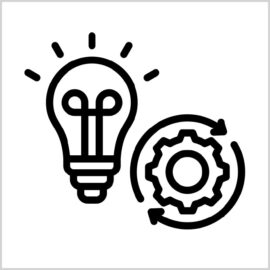Social Justice in the Math Classroom
By Martha Andrews
Anyone who has lived with or interacted with teenagers for more than five minutes has likely heard them decry the injustice of one situation or another. Sometimes, their perspective is self-centered: “It’s not fair that I should have to do all of this homework.” Other times, they are making sense of the world around them, forming opinions on climate change, redlining, gerrymandering, or the school-to-prison pipeline. If you have had the privilege of spending time in math classrooms with teenagers, you’ve also probably heard them question the utility of their academic work, especially their math work. “When will I ever use this in my life?”
Kids are energized by their revelations about how things should work in the world, and it’s our job as educators to help them see themselves as change makers rather than passive victims. In a world of hot takes and fake news, it’s important to teach kids that powerful arguments are backed by real data. That’s where these two common adolescent stances of fighting for justice and questioning the point of academic work come together. We can teach kids to use the math they are studying to support their opinions and change the circumstances around them.

At Math for All, we believe in stretching our brains around complicated math concepts, in developing the habits of flexible thinking, and in finding joy in the discovery of patterns and systems. AND we believe that every child needs an entry point into that work. For many young people, that entry point is in culturally relevant math teaching. Kids have a natural inclination to want to see change when they believe things don’t make sense, in both their immediate environment and the larger world. When we connect math teaching to ideas that activate kids, their drive and investment increases.
Gloria Ladson-Billings is a teacher educator and educational theorist who writes extensively about culturally relevant teaching. In 2021, Ladson-Billings defined culturally relevant pedagogy as teaching that promotes academic success, cultural competence, and critical consciousness. Of this last element, she shared stories of classrooms where “students are expected to engage the world and others critically” (p. 50). She described a classroom in which students and teachers noted that their district-supplied text books contained out-of-date information. Instead of just complaining, the teachers and students took action, writing letters to the editors of the local newspaper to inform them of the inadequacies of the textbooks and the inequity of students in the town’s wealthier schools having more up-to-date books. While this example shows the use of literacy tools to bring about change, students also need to see math as a useful tool to investigate, describe, and ultimately, enact change in the world around them. Math is an empowering tool for students to engage in their world.
The Math for All team recently held a book study of Choosing to See: A Framework for Equity in the Math Classroom, by Pamela Seda and Kyndall Brown (2021). Seda and Brown make a powerful case that it is our work as math educators to “provide students with a high-level, cognitively demanding mathematics curriculum … that gives students the ability to use math as a tool to improve their lives and collective conditions” (p. 99). They also discuss the importance of honoring student identity in the classroom and state that in taking the time “to get to know who their students are as people, they are better able to design mathematical tasks that are relevant to their lives” (p. 97).
Teachers must take the time to listen to their students—when they are talking to each other, when they are sharing with the class, when they are venting in the hallway. In order to tap into the concerns that really energize kids, teachers have to create classroom communities where students are comfortable talking about their lives, their perspectives, and the world. This might mean having regular student check-ins before class officially starts, spending time in the hall during transitions, sitting down at a table in the cafeteria, or checking in with kids during recess. Teachers also are well-served by checking in with students one-on-one, especially with the most reluctant students, to find out what drives and energizes them. Seda found that one of her most resistant students was engaged by the opportunity to dig into and analyze the demographic and math achievement data of the very system she was resisting. Students used the data to create scatterplot and regression equations that ultimately supported them in making recommendations to teachers, students, and administrators based on their findings. Giving the student the tools to examine the circumstances around her opened her up to the work of doing the high-school-level math she was capable of.
Teachers also can use formal surveys to get to know their students and understand their concerns about their community. Asking students questions like the ones below can lead to investigating rich contexts in which students are authentically engaged and motivated to dig into mathematical concepts.
- Given the chance, what is one change that you would like to see in our school?
- Given the chance, what is one change you would like to see in our community?
- Do you or your family volunteer in the community?
- What’s the hardest thing about the school week for you?
- What concerns do you have when you listen to or read the news?
- What do you wish adults knew that you and your friends care about?
- What’s one thing you wish could be different in our classroom? In the school? In the community?
Ladson-Billings (2021) points out that the topics kids are energized to investigate and change don’t have to be “…high-level issues in the public eye. They have to be problems that students are willing to engage” (p. 9). She provides examples of high schoolers who worked to investigate whether the no-hat rule was fairly implemented in their school by gathering quantifiable data about who faced consequences for hats, how often, and how severely. The students prepared visual representations of their findings and presented their data to the administration. In another school, 3rd-graders gathered data to support their claim that “no one likes” one of the frequent cafeteria choices. They designed ways to track how much lunch was left uneaten on different days, created surveys, and consolidated their data for a presentation to the grown-ups at school. In both of these instances, teachers were listening carefully to what the students cared about and incorporated grade-appropriate math and literacy skills to help them take action.
Social justice can be incorporated into the math classroom at any grade level. In one high school, kids participated in an investigation of food deserts. Students examined access to healthy and affordable foods and used the distance formula and their own ideas about equity to determine the location for building a new grocery store. In a 5th-grade class, students collected and analyzed data about injuries at recess to determine “hot spots” and use their evidence to make recommendations to school grown-ups about how to alleviate these problems. Students at a middle school were disturbed by the number of interactions they had with inebriated people on their way to school. They studied local legislation regarding zoning laws and liquor stores. They used mathematical modeling to demonstrate that the laws were not being enforced. Ultimately, their work led to the citation of 200 liquor stores and the closure of two near the school. When kids see tangible results of their efforts, it deepens their investment in the math learning that led them there.
Math is a substantial and essential tool for students to wield as they tackle meaningful social justice issues. By tapping into student interests and experiences, teachers can design meaningful mathematical investigations and inquiries that will help students understand themselves as change makers and come to see math as a tool that is not only relevant to their lives, but essential to their power.
References
Berry, R. Q., Conway, B. M., Lawler, B. R., & Staley, J. W. (2020). High school mathematics lessons to explore, understand, and respond to social injustice. Corwin.
Gewertz, C. (2020, December 2). Teaching math through a social justice lens. Education Week. https://www.edweek.org/teaching-learning/teaching-math-through-a-social-justice-lens/2020/12
Ladson-Billings, G. (2021). Culturally relevant pedagogy: Asking a different question (D. Paris, Ed.). Teachers College Press.
Makros, J., Russell, S. J., & Economopoulos, K. (1995). Beyond arithmetic: Changing mathematics in the elementary classroom. Dale Seymour Publications.
Seda, P., & Brown, K.. (2021). Choosing to see: A framework for equity in the math classroom. Dave Burgess Consulting, Inc.
Tate, W. F. (1994). Race, retrenchment, and the reform of school mathematics. The Phi Delta Kappan, 75(6), 477–484.
The contents of this blog post were developed under a grant from the Department of Education. However, those contents do not necessarily represent the policy of the Department of Education, and you should not assume endorsement by the Federal Government.
This work is licensed under CC BY-NC-SA 4.0
Math for All is a professional development program that brings general and special education teachers together to enhance their skills in
planning and adapting mathematics lessons to ensure that all students achieve high-quality learning outcomes in mathematics.

